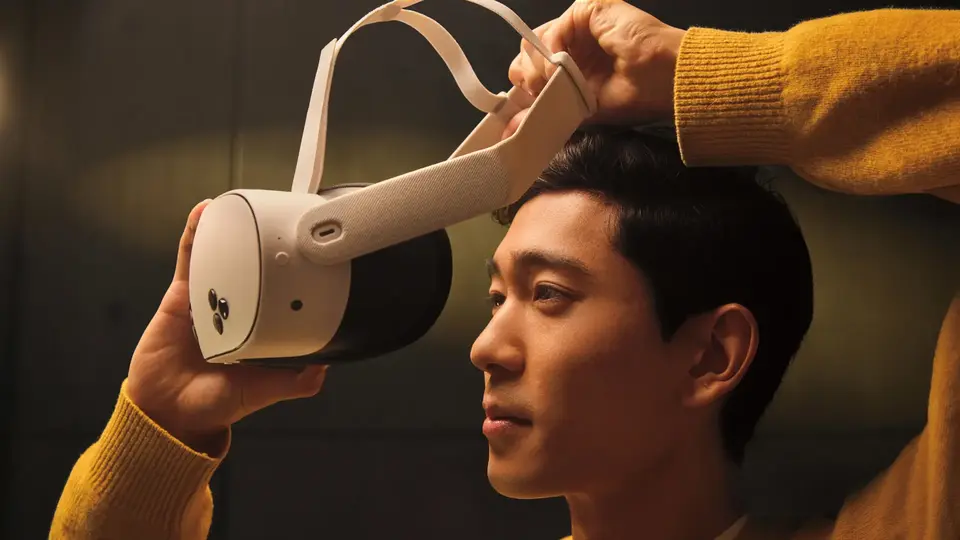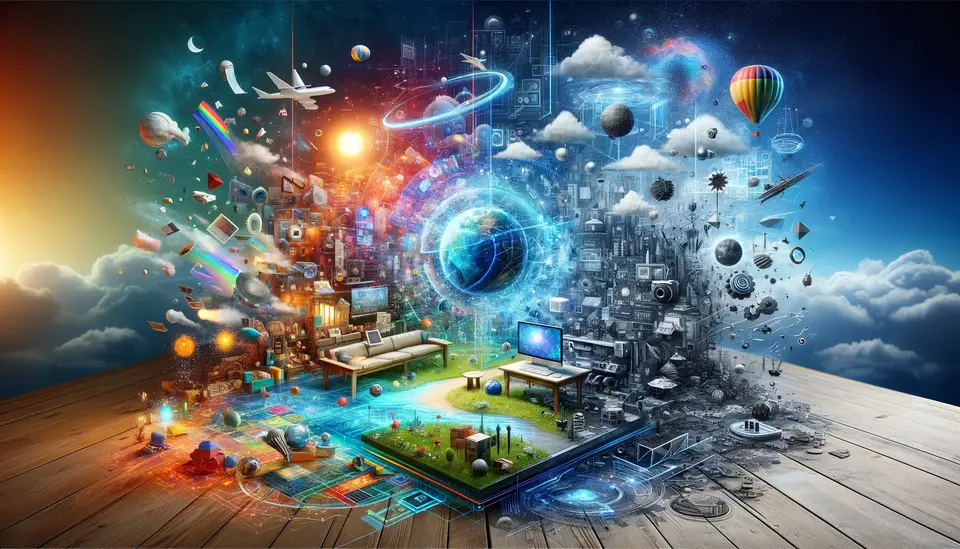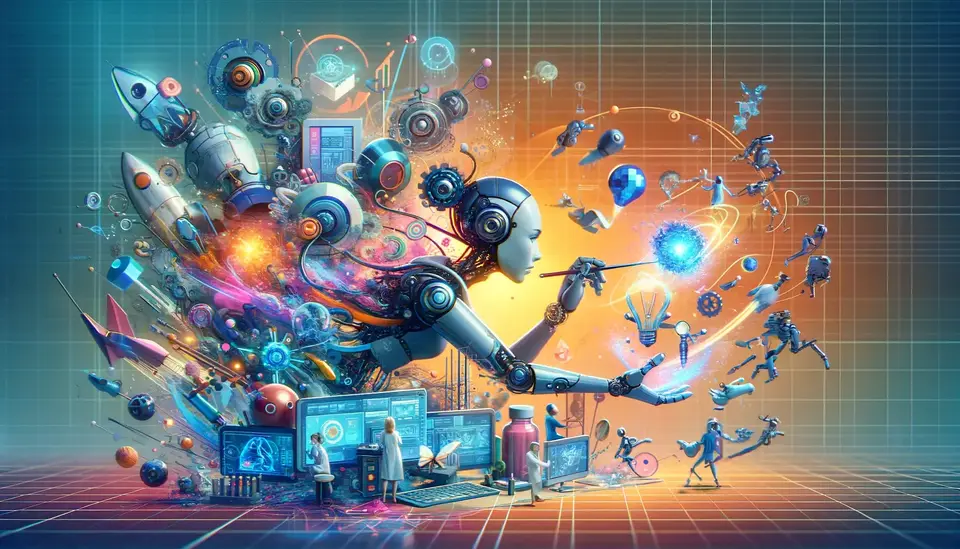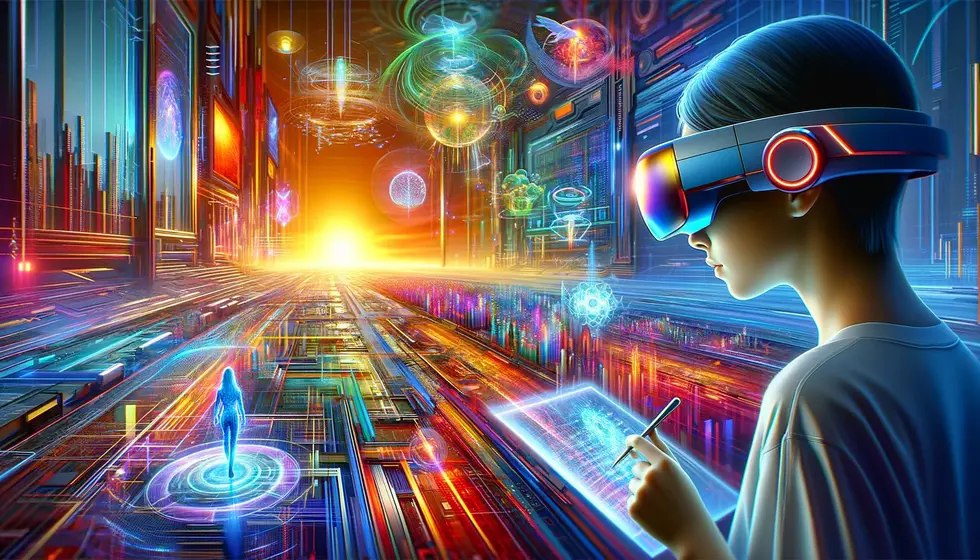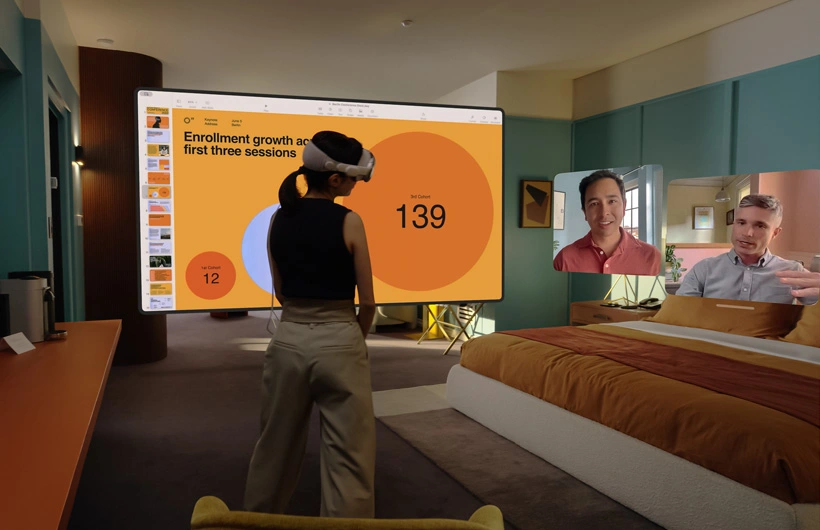Real Examples and Use Cases of Mixed Reality in Design
Posted on July 29, 2023 12 minutes 2373 words
Table of contents
As technology strides forward, we find ourselves increasingly situated at the juncture of the physical and digital worlds. A key player in this convergence is Mixed Reality (MR), a transformative technology that merges the real and virtual realms to create hybrid environments where physical and digital objects coexist and interact in real-time. MR, along with its siblings in the extended reality family—virtual reality (VR) and augmented reality (AR)—is increasingly carving a space for itself in the realm of design. This post aims to dive deep into the applications of mixed reality in various facets of design, from product to architectural, fashion, and industrial design.
Mixed Reality in Product Design
The product design process involves the conception, visualization, and realization of an idea into a tangible, useful product. Traditionally, this involved sketches, blueprints, and physical prototypes, which while effective, can often be time-consuming, expensive, and less flexible to modifications. Mixed Reality (MR) is changing this narrative, offering a new approach that enhances creativity, increases efficiency, and provides greater room for iteration and improvement.
Mixed reality, a seamless blend of physical and virtual worlds, provides an immersive, interactive environment that revolutionizes the product design process. Through 3D modeling and real-time interaction, designers can visualize, manipulate, and test their designs virtually, reducing the reliance on physical resources, and allowing quicker, more cost-effective iterations. This not only improves efficiency but also boosts the potential for innovation, as designers can easily experiment with different design alternatives.
Let’s delve deeper into two standout examples of how mixed reality is reshaping the world of product design.
Microsoft HoloLens
The Microsoft HoloLens, one of the pioneers in the MR arena, provides a fully self-contained, holographic computer, enabling designers to engage with their digital content and interact with holograms in the world around them. With this technology, product designers can create and manipulate 3D digital prototypes in mixed reality, literally pulling and stretching their designs into the desired form.
This mixed reality device empowers designers to visualize and test their ideas quickly and efficiently. Designers can collaborate with remote team members, sharing their immersive experience and receiving real-time input. They can explore the design from different angles, identify potential design flaws, and fine-tune their creations more intuitively.
The HoloLens has brought a new level of freedom and flexibility to product design, enabling designers to take their creative abilities to unprecedented heights.
Autodesk Fusion 360
Autodesk Fusion 360, a 3D CAD, CAM, and CAE tool, has integrated MR into its platform to further enhance the product design process. Designers can visualize and interact with their 3D models as though they were physical objects, allowing for a more intuitive and immersive design experience.
By taking advantage of mixed reality, Fusion 360 allows designers to detect design issues earlier in the process, which could otherwise go unnoticed until the physical prototyping stage. Early detection of potential problems leads to quicker resolutions, cost savings, and a more refined final product.
Furthermore, the immersive experience offered by Autodesk Fusion 360 enables designers to better communicate their design concepts to stakeholders. By allowing them to experience the product in a virtual environment, stakeholders can gain a better understanding of the design, leading to more informed decisions and increased satisfaction.
In conclusion, the integration of mixed reality into product design is transforming the way designers bring ideas to life. It is not only streamlining the design process but also breaking down barriers, fostering collaboration, encouraging innovation, and leading to better, more effective products. As the technology continues to advance, the possibilities for its application in product design are boundless.
MR in Architectural and Interior Design
In the fields of architectural and interior design, the manifestation of an idea into a physical form has always been the most critical step. The traditional practice of sketching on paper or building physical models is time-consuming and limits the extent of exploration. Enter mixed reality—a revolutionary technology that has profoundly expanded the horizons of architectural and interior design.
Mixed Reality (MR) uses immersive technology to overlay and intertwine digital and physical worlds, giving architects and designers a unique tool to visualize, interact with, and present their designs. MR’s ability to blend digital designs with physical environments enables designers to see and explore their creations in a whole new way, resulting in designs that are more creative, efficient, and attuned to the needs of their intended users.
The integration of MR in architectural and interior design allows for better spatial understanding, advanced collaboration, and a more dynamic design process. Here’s a detailed look at a couple of specific examples of how mixed reality is being used in architectural and interior design.
Trimble’s SketchUp Viewer
SketchUp Viewer is a powerful mixed reality tool developed by Trimble, leveraging Microsoft’s HoloLens technology. Architects and interior designers can use SketchUp Viewer to explore and share their 3D models in MR, providing an immersive design experience that far surpasses two-dimensional renderings.
For architects, the SketchUp Viewer means the ability to literally walk through their designs while still in the drafting stage. It provides a unique understanding of how different elements work together within the space, which leads to a more refined design process. This can be particularly useful in identifying potential challenges and troubleshooting them before construction begins.
For interior designers, SketchUp Viewer allows them to experiment with different layouts, furniture, and decor in a virtual space, enabling them to test and iterate their designs quickly. They can also walk their clients through these virtual interiors, providing them with a realistic view of the final result, rather than relying solely on imagination.
This real-world context and immersive experience make the design process more interactive, engaging, and effective, fostering a more comprehensive understanding and informed decision-making.
Varjo
Taking MR technology a step further, Varjo provides a mixed reality solution for architecture and design that offers an unprecedented level of detail and realism. Its human-eye resolution and integrated eye-tracking enable designers to create, modify, and view their designs in real time, at scale, and in their intended environments. This could mean seeing how the sunlight illuminates a room at different times of the day, understanding the view from a particular window, or observing how people would move through the space.
Varjo’s ability to present designs in a detailed and immersive way brings blueprints to life and makes design decisions more data-driven. For clients, it means they can “experience” the space before it’s built, helping them understand the design intent, give more informed feedback, and make confident decisions.
This intersection of high-definition virtual reality and the physical environment enhances communication, increases efficiency, and enriches the design process. With mixed reality tools like Varjo, architects and interior designers can transcend traditional design limitations and create spaces that are innovative, intuitive, and deeply connected with the people who will inhabit them.
MR in Fashion Design
Fashion, an industry deeply rooted in visual creativity and personal expression, is undergoing a transformative shift with the adoption of Mixed Reality (MR). The convergence of the digital and physical worlds offered by MR is revolutionizing the entire fashion design process, from conceptualization and design to showcasing and retailing.
Traditionally, fashion design involved sketching designs on paper, creating patterns, sewing samples, and fitting them onto mannequins or models for adjustments. This process is labor-intensive, time-consuming, and costly. Moreover, it often limits the possibilities for rapid iteration and environmental sustainability.
Mixed reality is disrupting this status quo. With MR, fashion designers can create, visualize, and modify their designs in a 3D digital space before a single stitch is sewn. They can experiment with different fabrics, patterns, and styles, making changes instantly and seeing the results in real-time. This digital workflow allows designers to iterate quickly, reducing costs and speeding up the design process.
Equally exciting is the potential of MR to present and sell fashion. Mixed reality can enable customers to virtually try on clothes from the comfort of their own homes, visualizing how they would look and fit in a much more engaging and personalized shopping experience.
Let’s delve deeper into an example of how mixed reality is making its mark in the world of fashion.
The Fabricant
The Fabricant is a trailblazing digital fashion house that is leveraging the potential of mixed reality to its fullest. Instead of traditional materials like fabric and thread, The Fabricant uses pixels and data to create digital-only collections.
By designing and showcasing fashion in a digital environment, The Fabricant enables a new form of expression that is unencumbered by physical limitations or environmental concerns. Designers can experiment with virtual fabrics and styles that would be impossible or impractical to create physically, pushing the boundaries of fashion design.
Furthermore, consumers can virtually try on and purchase digital garments, which they can wear in digital spaces like social media, video games, and virtual worlds. This not only creates a unique, personalized fashion experience, but it also addresses the environmental impact of the fashion industry by eliminating the need for physical production and transport.
Another important application of MR in The Fabricant’s approach is the virtual catwalk. Using mixed reality, the brand can create fully immersive fashion shows, allowing viewers from all over the world to experience their latest designs as if they were there in person. This offers a unique platform for presenting fashion, engaging customers, and reducing the environmental impact of traditional fashion shows.
In essence, through the integration of mixed reality, The Fabricant is reshaping the fashion landscape, creating a realm where design, technology, and sustainability intersect to form the future of fashion.
The adoption of mixed reality in fashion design is an exciting testament to the endless creative possibilities that this technology holds. As we look to the future, it’s clear that MR will continue to play a pivotal role in shaping the fashion industry, pushing the boundaries of design, retail, and the overall fashion experience.
MR in Industrial Design
Industrial design is a field characterized by the creation and development of concepts that enhance the function, value, and appearance of products for the benefit of both the user and the manufacturer. Traditionally, this process involves sketching, model-making, and prototype testing, which can be resource-intensive, costly, and slow. However, the emergence of Mixed Reality (MR) is revolutionizing this process by bringing an immersive, interactive dimension to the design process.
Mixed Reality, by overlaying digital information onto the physical world, allows industrial designers to create, experiment with, and validate their designs in a virtual 3D space. This ability to interact with a virtual model in a real-world context not only facilitates a better understanding of the product’s design but also speeds up the iterative process. Designers can immediately see the impact of their modifications, quickly identify and rectify issues, and easily communicate their design intent to stakeholders.
But it’s not just the design process that benefits from MR. This technology also enhances the presentation of the product, training for its use, and maintenance procedures. These applications ensure a comprehensive approach to product lifecycle management, enhancing efficiency and effectiveness at each stage.
To better understand the transformative power of mixed reality in industrial design, let’s look at two notable examples.
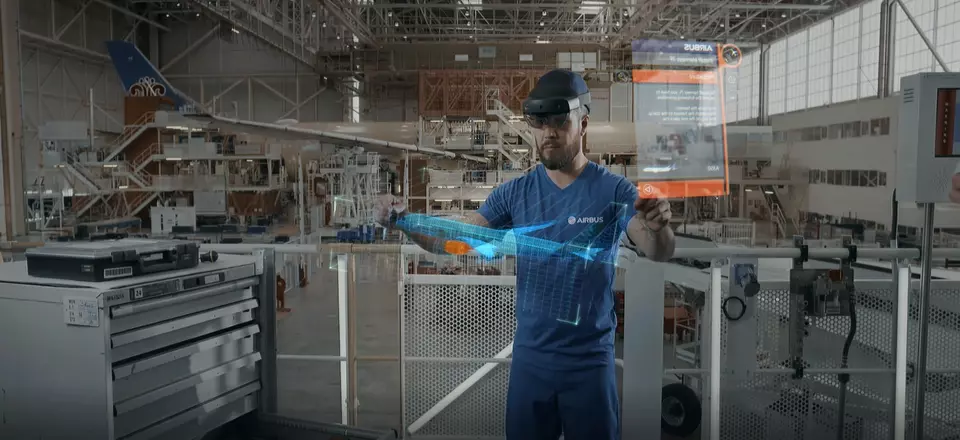
PTC Creo and Microsoft HoloLens
PTC Creo, a leading 3D CAD software, has partnered with Microsoft HoloLens to bring mixed reality to the world of industrial design. With this combined technology, designers can visualize, interact with, and test their 3D designs in a real-world context.
This collaboration enables a more immersive and collaborative design experience. Designers can virtually manipulate their designs, assess different design alternatives, and gain a comprehensive understanding of how the product interacts with the environment. It also facilitates better communication of design concepts, with stakeholders able to view, understand, and provide feedback on the designs in a highly interactive manner.
Furthermore, the HoloLens can be used to provide holographic instructions for product assembly and maintenance, thereby improving training efficiency and reducing the likelihood of errors.
Gravity Sketch
Gravity Sketch, an intuitive 3D creation tool, is another powerful application of mixed reality in industrial design. It allows designers to create and manipulate 3D models in a virtual space as if they were physical objects. This provides a more natural and immersive way to create designs, fostering creativity, and speeding up the design process.
Gravity Sketch also supports real-time collaboration, meaning team members from different locations can co-create and review designs in the same virtual space. This dramatically enhances the collaborative aspect of the design process, leading to better communication, faster decision-making, and ultimately, better designs.
In conclusion, the application of mixed reality in industrial design is ushering in a new era of creativity, collaboration, and efficiency. The ability to visualize, interact with, and test designs in a mixed reality environment is proving transformative, and as technology continues to advance, the potential applications and benefits will only continue to grow.
Conclusion
Mixed reality is ushering in a new era of design. By fusing digital possibilities with physical experiences, it provides a more immersive, intuitive, and sustainable approach to bringing ideas to life. The examples given here are just a snapshot of the wide-ranging potential of MR in design.
As we move forward, mixed reality technology will continue to evolve and become more integrated into our daily lives, driving more immersive experiences and creating more efficient design processes. It is truly an exciting time to be part of the design industry, with the potential of mixed reality barely being tapped.
Future Perspective
Mixed reality, though still in its nascent stages, has shown tremendous potential in shaping our future. As more organizations recognize its benefits and invest in MR solutions, its evolution is sure to accelerate, leading to even more impressive and versatile applications.
Mixed reality is not just another technological fad. It is a powerful tool capable of revolutionizing industries, changing the way we design, construct, and interact with the world around us. It’s an exciting journey of discovery and innovation, and we are only at the beginning.
Whether you’re a designer seeking to push the boundaries of your creations or a business looking to leverage the latest technological advances, mixed reality holds a world of possibilities. It’s time to explore, experiment, and embrace the mixed reality revolution.


